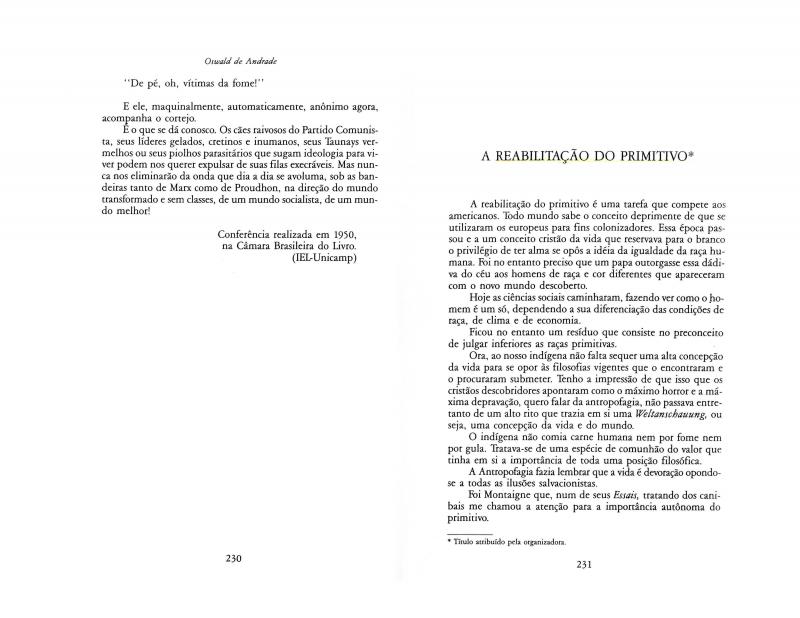Oswald de Andrade (1890–1954) was the creative and intellectual pillar that supported the founding of the so-called Movimiento Antropófago; he contributed the cornerstone of the ideas and theories of this Brazilian modernist movement: the “Manifesto antropófago,” which was written in 1928, four years after its closest forerunner, the “Manifiesto Pau-Brasil.”
In the manifesto Oswald produced in 1924, he makes it clear that what he is proposing is simply a strategy for active participation, an attempt to articulate the ideas of the modernist group. A subtext of the manifesto is a defense of Brazilian art inspired by and based on local experiences. His proposal differs from those advocated by other modernist authors, including another noted exponent, known as “Mário” since his last name is also De Andrade, as well as Guilherme de Almeida, Ronald de Carvalho, Menotti Del Picchia, and Cassiano Ricardo. This includes writers who, at that time, were working in other states: Ascenso Ferreira (Pernambuco), Augusto Meyer (Rio Grande do Sul), Jorge de Lima (Alagoas), Carlos Drummond de Andrade, and Murilo Mendes (both of whom were in Minas Gerais).
[See the following articles by Oswald de Andrade in the ICAA digital archive: “Manifesto antropófago” (doc. no. 771303); “Mensagem ao antropófago desconhecido” (doc. no. 784801); “Um aspecto antropofágico da cultura brasileira” (doc. no. 842932); “Manifesto Pau-Brasil” (doc. no. 781051); “Pau-Brasil” (doc. no. 784909); [“A reabilitação do primitivo…”] (doc. no. 784450); “A Marcha Das Utopias” (doc. no. 838902); “Péret” (doc. no. 1110367); “Aspectos da pintura através de ‘Marco Zero’” (doc. no. 783942); “Em prol de uma pintura nacional” (doc. no. 783886); and “Museu de arte moderna” (doc. no. 784030)].









